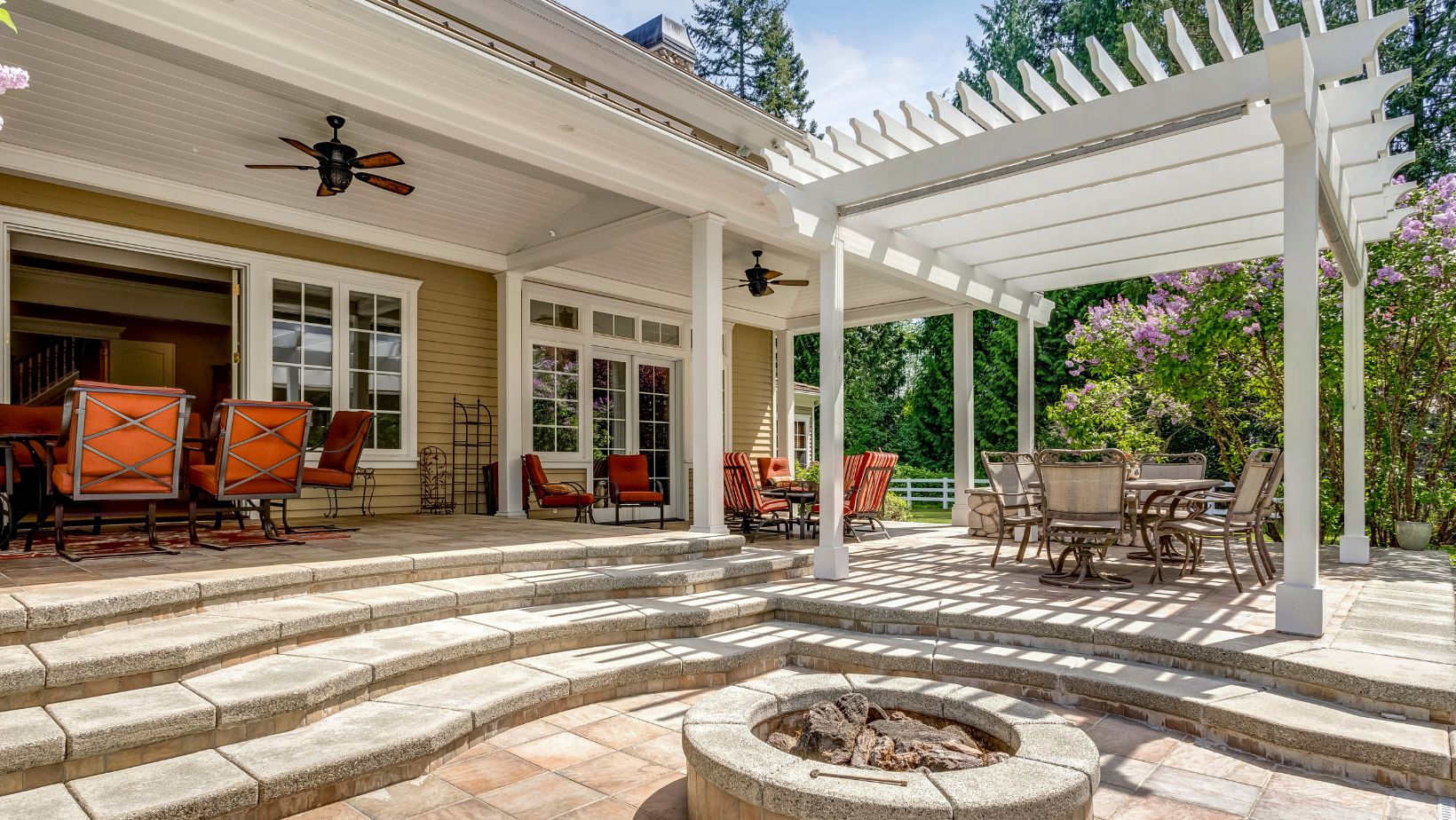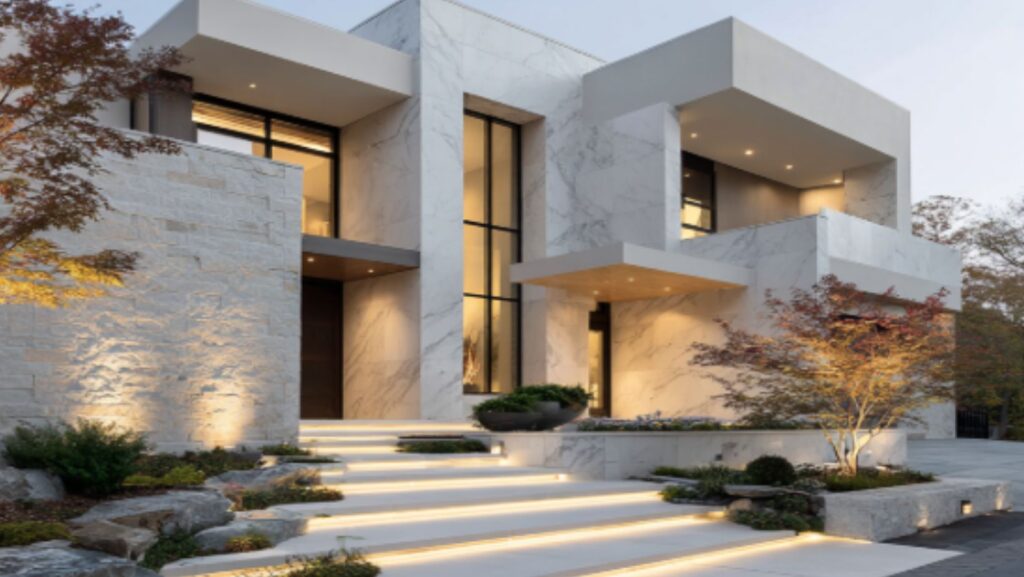Stop thinking of your yard as separate from your house. The most jaw-dropping homes today blur those boundaries completely, and smart landscape design consultants know that successful residential landscape design isn’t about picking pretty plants—it’s about extending your home’s architectural DNA into every corner of your property.
Walk through any award-winning residential project and you’ll notice something: the outdoor spaces don’t feel like afterthoughts. They feel inevitable. Expert contractor selection becomes critical because mediocre hardscape installation can destroy even the most brilliant design concept faster than you can say “Pinterest fail.”
Why Most Outdoor Spaces Feel Like Awkward Add-Ons
Here’s the brutal truth: most landscapes fail because they’re designed in isolation from the architecture they’re supposed to complement. Homeowners pick materials they like, arrange plants that seem pretty, and wonder why their $50K landscape renovation feels disconnected from their beautiful home.
The solution? Start thinking like an architect, not a gardener. Modern landscape architecture treats outdoor spaces as additional rooms that happen to have sky for ceilings. Every hardscape element needs to serve the same design language as your interior spaces while solving the unique challenges that come with weather, drainage, and seasonal change.
HGTV’s landscape design showcase consistently features projects where hardscaping creates seamless transitions between indoor and outdoor living, proving that the most successful outdoor spaces feel like natural extensions of home architecture rather than separate decorative projects.
The New Rules of Material Conversation
Your home’s materials are already having a conversation—dark window frames talking to light siding, stone foundations responding to wood trim, metal accents punctuating clean lines. Landscape architecture either joins this conversation intelligently or creates visual chaos that makes even expensive homes look amateur.
Smart hardscape design picks up architectural cues and extends them logically into outdoor environments. If your home features clean horizontal lines, your hardscape should echo those proportions. If your architecture emphasizes natural materials, your stone and wood selections should feel like logical family members, not distant cousins.
But here’s where it gets sophisticated: the best landscape architects don’t just copy interior materials—they translate architectural concepts into weather-appropriate outdoor versions that maintain design continuity while performing beautifully in exterior conditions.
Creating Outdoor Rooms That Actually Function
Forget “outdoor living spaces”—that phrase has been beaten to death by every home improvement show on television. Think instead about creating exterior rooms that solve specific lifestyle problems while maintaining architectural sophistication.
Your outdoor dining area should have the same spatial logic as your interior dining room, with appropriate scale, lighting, and circulation patterns. Your pool deck should relate to your home’s proportions and sight lines. Your entry sequence should create the same sense of arrival and welcome as a well-designed foyer.

This isn’t about copying indoor layouts exactly—it’s about applying the same thoughtful space planning principles that make interior rooms functional and beautiful. The materials change, the scale adjusts, but the underlying design logic remains consistent.
The Infrastructure Nobody Talks About
Instagram doesn’t show the drainage systems, electrical planning, and structural engineering that make gorgeous outdoor spaces possible. But these invisible systems determine whether your landscape architecture dreams become daily reality or expensive maintenance nightmares.
Proper hardscape installation requires understanding how water moves through your property, where utilities can be routed without creating future problems, and how different materials perform in your specific climate conditions. This isn’t glamorous stuff, but it’s the foundation that separates landscapes that look good in photographs from landscapes that function beautifully for decades.
Technology Integration That Doesn’t Scream “Smart Home”
The best landscape architecture incorporates technology so seamlessly that users benefit from sophisticated systems without being reminded they exist. Lighting that automatically adapts to seasonal changes, irrigation that responds to weather patterns, and sound systems that disappear into design elements while creating perfect acoustic environments.
But the goal isn’t showcasing technical capabilities—it’s enhancing outdoor experiences through invisible intelligence that makes spaces more comfortable, beautiful, and functional without adding visual complexity or maintenance burden.
Why This Matters for Architecture Enthusiasts
If you love good architecture, you already understand that details matter enormously. The same attention to proportion, material quality, and spatial relationships that makes interior design successful applies to landscape architecture—but with additional challenges related to climate, growth patterns, and seasonal variation.
The most rewarding residential projects integrate landscape architecture from the earliest design phases, creating opportunities for architectural moves that wouldn’t be possible without coordinated outdoor design. Courtyards that bring light into interior spaces, terraces that extend interior room proportions, and sight lines that connect indoor and outdoor focal points.
The Long Game of Landscape Investment
Quality landscape architecture appreciates differently than interior improvements because it gets better with time as plants mature and hardscape materials develop natural patinas that enhance rather than diminish their appearance. But this long-term payoff only happens when initial design and installation meet professional standards that can support decades of growth and seasonal cycling.
Properties with truly integrated landscape architecture consistently outperform those where outdoor spaces feel like decorative additions because they offer more functional living space, stronger architectural coherence, and the kind of sophisticated design thinking that appeals to buyers who understand quality.
When landscape architecture successfully integrates with modern home design, it creates properties that feel complete rather than composed of separate indoor and outdoor parts. This integration requires thinking beyond surface aesthetics to address the technical, functional, and experiential challenges of creating unified living environments that work beautifully across all seasons and all aspects of contemporary life.


More Stories
Sustainable Landscape Design Practices for Eco-Friendly Home Gardens
How Indoor Air Quality Affects Your Health and What You Can Do About It
Affordable Housing Meets Modern Architecture